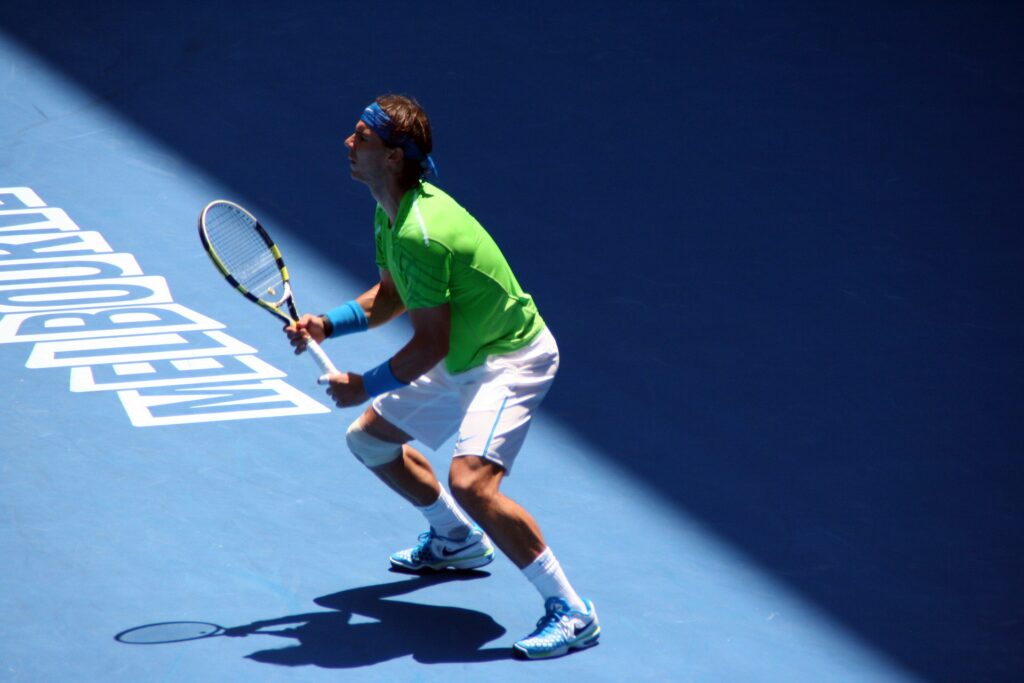Tennis Language


Understanding the rules of tennis is a key part of improving your game.
When you start to play more competitive matches, there are a few different aspects of the game that come into play, more so than in recreational tennis.
One of these is the Walkover. Walkovers occur in tournament play and effectively hand the match to the opponent without either player stepping onto the court.
What is a Walkover in Tennis
A Walkover in tennis occurs when a player informs the tournament referee that they will not be participating in their scheduled match, prior to the start of the match.
This differs from a retirement, which happens when a player pulls out mid-match, conceding to their opponent. Retirements usually occur when a player has sustained an injury throughout the course of the match, and can no longer continue playing.
A walkover is also usually the result of an injury but occasionally occurs when a player has tournament scheduling issues.
In general, if a player has sustained an injury during a match, but has felt well enough to continue to the end they would not retire from the match.
However, if after the adrenaline has worn off and they start to feel the injury more acutely, they may not be able to continue on into the next round.
In these circumstances, the injured player will inform the tournament organizer/referee that they are unable to play their match, and their opponent will automatically advance to the next round.
Why is it called a Walkover?
The term walkover actually originated with horse racing. When a horse was so dominant, the rider would walk over the line in what was effectively a one-horse race.
The term has been translated into many sports and is commonly used to describe a match or contest that has been won very easily. However, in tennis, unlike other sports, it does have a specific meaning.
Types of Walkovers in Tennis
There are several reasons why players may choose to give a walkover in tennis. The most common by far is through an injury, particularly at the highest levels of professional tennis.
However, at the lower levels of the game, it is possible that players may decide to opt for a walkover if they have overlapping tournaments in their schedules, and prize money is at stake.
Injuries
The most common reason for a walkover is an injury. Players may be able to get through the match they sustained an injury in, particularly if it occurred late on in the match or they had adrenaline acting as a natural painkiller.
Once the excitement of the match win has worn off, players may feel that their injury has got worse and will hamper them significantly in their next match. In this case, the player will choose to pull out of their next match to save them from worsening their injury.
Scheduling Issues
Another, less common reason that a player may decide to opt for a walkover rather than playing their scheduled match is tournament overlaps.
At the recreational or even lower-level professional tournaments, players may have overlaps in their schedule, where one tournament starts before a player’s current tournament ends.
With this in mind, it is feasible that a player may decide to withdraw from a match in the latter stages of a tournament, in order to play the opening rounds of a more prestigious event the following week.
This is not seen very often and is sometimes regarded as not sporting in the tennis community, but when prize money or ranking points are at stake, players will occasionally opt to withdraw from one tournament to play another.
The Most Famous Walkovers in Tennis
There have been some pretty high-profile walkovers in professional tennis, despite millions of dollars, ranking points and big trophies being on the line.
Roger Federer ATP Finals 2014
One of the most high-profile walkovers in men’s tennis was that of Roger Federer who was suffering from persistent back issues at the 2014 ATP Finals. Federer was due to play long-term rival Novak Djokovic in what was billed to be a thriller.
However, after his three-set win against Davis Cup teammate Stan Wawrinka in the semi-finals, he was unable to play the championship match. This handed Djokovic the win, and he then proceeded to play an exhibition match against Andy Murray in place of the final.
Rafael Nadal French Open 2016
Another very high-profile withdrawal came from the king of clay himself, Rafael Nadal. In the 2016 French Open, Nadal pulled out of the tournament because of a wrist injury after beating Argentina’s Facundo Bagnis in the 2nd round.
Novak Djokovic went on to win the tournament and claim his 1st French Open title, beating Andy Murray in the final.
Rafael Nadal Wimbledon 2022
Another walkover coming from Rafa Nadal was at the 2022 Wimbledon Championships.
Following an abdominal tear that Nadal sustained in his quarter-final match with Taylor Fritz, he was forced to withdraw from his blockbuster semi-final clash with Aussie Nick Kyrgios.
This gave Nick a walkover into the final with Novak Djokovic, where he was beaten by the Serbian in 4 sets.






